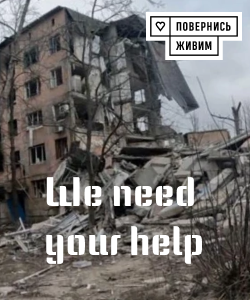Media outlets have published the text of Ukrainian and European proposals for peace, which are interpreted as an alternative to the “Trump plan
" International news agencies have released new materials highlighting the content of Ukrainian and European proposals to end the ongoing war between Russia and Ukraine. Notably, these documents serve as a response to the American "peace plan," presented in Paris by former U.S. President Donald Trump's special envoy, Steve Vtkoft. According to sources, including Reuters, Ukrainian and European officials handed over these proposals on Wednesday during negotiations in London. The substance of the Ukrainian-European initiative resembles the structure of the American plan but includes significant additions and expanded demands, especially regarding the ceasefire regime and monitoring compliance—with the involvement of the U.S. and European countries as peace guarantors. Unlike the official American proposal, the Ukrainian-European document does not contain language recognizing "de jure" or "de facto" Russian sovereignty over the occupied territories. We publish the full text of the Ukrainian and European proposals, translated into English for better understanding of the parties' positions. **Framework Agreements between Russia and Ukraine** **Ceasefire:** Both sides commit to immediately initiating and adhering to a complete and unconditional ceasefire in the air, on land, and at sea. This should be the first step in implementing the agreements. Simultaneously, technical negotiations involving the U.S. and European leaders will begin to detail the implementation of the ceasefire regime. Additionally, committees will be formed to monitor compliance with the agreements—under U.S. leadership with support from other third countries. **Return of deported persons and prisoner exchange:** Russia commits to unconditionally returning all Ukrainian children unlawfully and forcibly relocated to its territory. Full implementation of the "all for all" principle regarding the exchange of prisoners of war and the release of civilian detainees is also envisaged. This is a key element for restoring trust and achieving humanitarian settlement. **Security guarantees for Ukraine:** Ukraine will receive reliable security guarantees, including any assurances similar to NATO's Article 5, providing Ukraine with the means to feel protected against potential aggression. However, within the military arena, as in the current NATO format and globally, there is no consensus on Ukraine's accession to the Alliance. Therefore, Ukrainian and European officials propose involving a special group from European and interested non-European countries to serve as guarantees, and to have the capacity to participate in peacekeeping operations without restrictions on the presence and arming of foreign forces on Ukrainian territory. **Territorial issues:** After a complete and unconditional ceasefire, the sides will decide on resolving all territorial questions. Discussions will be based on the current line of control and will take into account actions ensuring security and stability. Ukraine aims to regain control over the Zaporizhzhia Nuclear Power Plant with U.S. participation, as well as over the Kakhovka Dam. Unimpeded passage on the Dnipro River and control over the Kinburn Spit are also confirmed, aiming to ensure regional stability and security. **Economic sphere and reconstruction:** Agreements between Ukraine and the U.S. cover economic cooperation and mineral resource use. Ukraine, according to the proposals, should be fully restored, with financial compensation, including from frozen Russian assets. These assets will remain frozen until Russia can compensate for the damage caused to Ukraine's economy. Sanctions imposed by the U.S. since 2014 are planned to be gradually lifted upon achieving sustainable peace, and reimposed in case of violations. These proposals are the response of the Ukrainian and European delegations to the American "peace plan," announced in Paris by Trump's special envoy. It is known that the document handed over to Ukraine and European countries expressed the U.S. willingness to recognize Russian control over Crimea and ease sanctions on Moscow—steps that have caused particular concern among Ukrainian politicians and analysts. Meanwhile, Ukrainian President Volodymyr Zelenskyy stated on April 24 that, following negotiations in London, the Biden administration outlined its strategy for resolving the conflict, and according to him, "another document" has appeared, which may differ from previous agreements. Earlier, media reported that the U.S. had provided Ukraine and European countries with a brief document described as the "final proposal" for resolving the war. This document mentioned recognizing Russian control over Crimea and easing sanctions on Moscow—steps that have raised increasing anxiety in Kyiv and European political circles. The issue remains open and requires comprehensive analysis and diplomatic discussions. Thus, Ukrainian and European policymakers are currently actively working to formulate more detailed and balanced conditions for peaceful settlement, seeking a compromise between the state's interests, security guarantees, and the possible gradual return of territories. Meanwhile, the international community is carefully monitoring these processes, as their outcomes will influence the future security and stability of the region.

